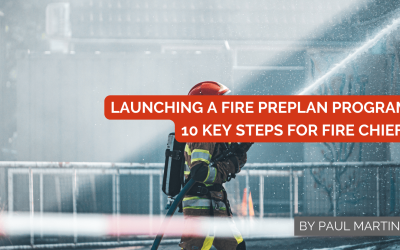Smart mobile technology on the horizon for pre-incident planning part 2

Integrating what first responders want with smart mobile technology
Part 1 of this article (Applying Smart Mobile Technology to Pre-incident Planning Part 1) touched briefly on research studying what first responders themselves want to see in digital pre-plans. Part 2 describes this research project in detail.
Up until 2017, no scientific research had been conducted on first responders’ needs and preferences for digital pre-incident plans. That year, APX collaborated with the University of Ottawa to launch a research project to collect the data.
The research team conducted an analysis of what constitutes “building information” according to the NFPA and the National Institute of Standards and Technology (NIST). They designed the survey to collect data on firefighters’ preferences regarding the way information should be organized and presented in pre-plans, the ideal amount of information and level of detail, and the use of smart mobile devices. The survey also specifically queried how key elements should be presented so that firefighters would be able to easily access and manipulate the data during an emergency operation.
To gather the data, the online survey was circulated to a select number of fire departments in 84 cities over 36 days, from January 10 to February 15, 2017, resulting in 74 responses. Respondents were fire chiefs (64%), full-time firefighters (31%), and volunteer firefighters (5%).
Survey results – first responders’ preferences
The online survey found respondents believed smart mobile devices would give first responders an unprecedented opportunity to rethink and redesign fire pre-incident planning. The results made it clear that firefighters want to take advantage of smart mobile technology, especially to access pre-incident fire plans. The survey found that:
- Firefighters expect to see a summary of building information while en route to an emergency scene.
- 7% of firefighters want every firefighter on a fireground to have access to the same building information regardless of arrival time, rank, or job description.
- 70% of respondents preferred annotated images to plain images.
- Respondents preferred an integrated presentation in which annotated images are used to link different information items to their respective physical locations.
Building on this in-depth research and on our knowledge and expertise, we have incorporated and integrated first responders’ preferences into our building and onsite data solutions.
Transitioning to smart mobile technology
The drive for mobility is part of the technology agenda for most business organizations today. They want to take advantage of the unprecedented level of real-time connectivity delivered by smart mobile technology, so adoption has been rapid. Unfortunately, it seems that the opposite is true for the emergency services sector. Adoption of mobile technology there has been slow for two reasons: resistance to change, and a high level of comfort with and dependency on traditional methods of emergency preparedness.
Today, everything is finally in place for the emergency services sector to effectively transition to smart mobile technology—SmartCity building and onsite data solutions that incorporate first responders’ needs and preferences, that deliver compliance with the NFPA 1620 Standard, and that offer ease-of-access to any type of data required for effective and rapid response to an emergency situation.
Smart mobile technology is most definitely on the horizon for pre-incident planning. The evolution of emergency pre-plans, coupled with the evolution of mobile-first technology, represents an exciting opportunity for first responders to replace their outdated paper pre-plans with instantly accessible digital ones, delivered right to the palm of their hand.


